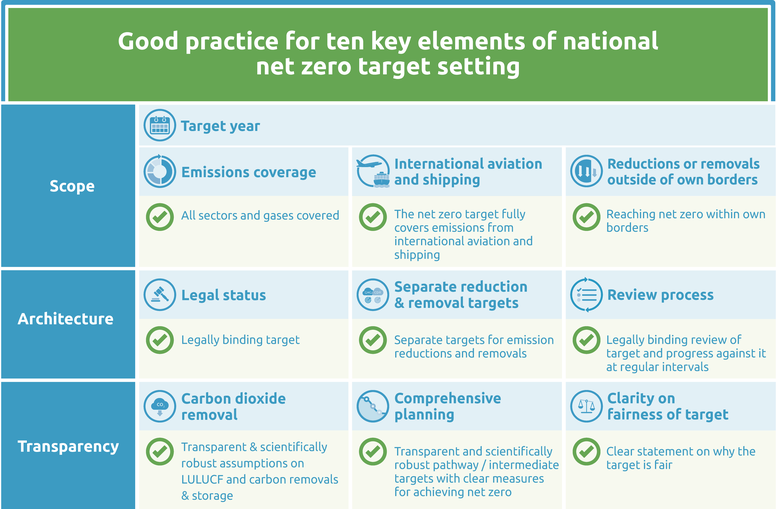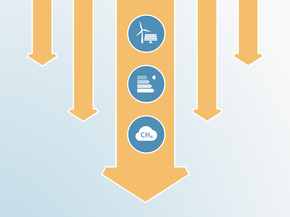Net zero targets
Summary
We evaluate the net zero target as: Average
Kazakhstan announced a net zero by 2060 target at the Climate Ambition Summit in December 2020 and, in September 2021, the Ministry of Ecology and Natural Resources published the Doctrine (strategy) for achieving carbon neutrality by 2060 for public discussion akin to a green paper (Republic of Kazakhstan, 2021). On 2 February 2023, the President of Kazakhstan approved the resultant Strategy for achieving carbon neutrality by 2060, thereby enshrining the net zero target in law.
The net zero target covers all economic sectors and all GHG emissions. However, as of November 2023, Kazakhstan has not yet submitted a long-term strategy (LTS), with this target, to the UNFCCC.
The adoption of the strategy marks a step in the right direction when it comes to articulating government’s long-term ambition. However, many of the key elements assessed according to the CAT’s good practice elements for scope, architecture, and transparency could be strengthened. In particular, the comprehensiveness of planning could be improved by establishing legally binding sectoral targets, assumptions around carbon dioxide removals could be clearer, and a robust review process could be established. In addition, details on the fairness of the target could be included.
Ten key elements
Scope
- Target year – Kazakhstan aims to reach carbon neutrality by 2060.
- Emissions coverage – The target covers all sectors of the economy and all GHG emissions, targeting zero national net GHG emissions in 2060.
- International aviation and shipping – Kazakhstan provides no information on its intention to cover international aviation and shipping.
- Reductions or removals outside of own borders – Kazakhstan provides no information on its intention to use international offset credits to meet its net zero target.
Target architecture
- Legal status – On 2 February 2023, the President of Kazakhstan approved the Strategy for achieving carbon neutrality by 2060, thereby enshrining the net zero target in law (Republic of Kazakhstan, 2023). However, the government has not yet submitted a long-term strategy (LTS) with the net zero target to the UNFCCC.
- Separate reduction & removal targets – Kazakhstan plans to reduce emissions from 351.2 CO2-eq (2020) to 45.2 CO2-eq by 2060 and sets a removal goal of -45.2 CO2-eq for GHG absorption in the LULUCF sector.
- Review process – Although Kazakhstan emphasises the overall importance of reviewing the current target and strategy, it provides no further information on its intention to establish a regular and legally binding review cycle.
Transparency
- Carbon dioxide removal –The net zero strategy provides transparent statements on its LULUCF sink in 2060 but does not provide information on its intention to communicate transparent assumptions on other removals and storage.
- Comprehensive planning – The 2023 Strategy for achieving carbon neutrality by 2060 provides a transparent emissions pathway to reach carbon neutrality by 2060, displaying emissions in 10-year intervals. It includes key mitigation strategies for each sector, but does not include sectoral targets Kazakhstan plans to use carbon capture and storage (CCUS) technologies in the medium- to long-term when they become economically feasible. The strategy is based on the 2021 Doctrine to Achieve Carbon Neutrality Until 2060 (green paper), which included technical scenario analysis of a net zero pathway.
- Clarity on fairness of target – Kazakhstan makes no reference to fairness or equity in the context of its net zero target.
Good practice
The Climate Action Tracker has defined the following good practice for all ten key elements of net zero targets. Countries can refer to this good practice to design or enhance their net zero targets.
Further analysis
Latest publications
Stay informed
Subscribe to our newsletter





